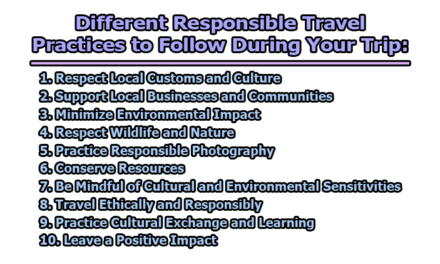Key Elements of Organizational Behavior:
Organizational Behavior (OB) is a multidisciplinary field that explores how individuals, groups, and structures interact within an organization to achieve common goals. It involves the study of human behavior, attitudes, and performance within the organizational context. The success of any organization is heavily influenced by several key elements: People, Structure, Technology, and External Environment. In this article, we will delve into each of these key elements of organizational behavior, providing examples to illustrate their significance in shaping organizational behavior.
1. People: The first and perhaps most crucial element of organizational behavior is the people involved – the employees, managers, and leaders. The behavior, motivation, and attitudes of individuals have a profound impact on the organization’s overall functioning. Let’s explore some key aspects:
a. Motivation: Motivation is the driving force behind an individual’s behavior and performance. It determines the level of effort an employee puts into their tasks and the persistence in achieving organizational goals. For example, imagine a sales team where employees receive attractive commissions and recognition for meeting targets. This incentivizes them to work harder, leading to improved overall performance and higher sales.
b. Communication: Effective communication is vital for a harmonious work environment and successful teamwork. When communication channels are open and transparent, it fosters collaboration and reduces misunderstandings. For instance, regular team meetings, clear instructions, and feedback mechanisms enable employees to understand their roles better and align their efforts toward common objectives.
c. Leadership: Leadership plays a critical role in shaping the behavior and culture of an organization. Transformational leaders who inspire and motivate their teams often lead to a more engaged and dedicated workforce. In contrast, ineffective or autocratic leaders may lead to employee dissatisfaction and decreased productivity. Consider a scenario where a visionary CEO communicates a compelling vision for the future, creating a sense of purpose and enthusiasm among the employees.
d. Diversity and Inclusion: Diversity within the workforce brings together individuals from various backgrounds, cultures, and experiences. When organizations embrace diversity and create an inclusive environment, it fosters creativity, innovation, and different perspectives. For example, companies with diverse leadership teams are more likely to develop products and services that cater to a broader customer base.
2. Structure: Organizational structure refers to how the various roles, responsibilities, and tasks are divided and coordinated within the organization. The structure affects communication patterns, decision-making processes, and the overall flow of information. Let’s examine its key components:
a. Hierarchical Structure: A hierarchical structure is characterized by multiple levels of management, from top-level executives to front-line employees. This type of structure allows for clear reporting lines and defined authority levels. However, it can also slow down decision-making and hinder innovation. For example, in a traditional manufacturing company, decisions might need to go through several layers of management, which could lead to delays in responding to market changes.
b. Flat Structure: In contrast to the hierarchical structure, a flat organizational structure has fewer management layers and promotes a more decentralized approach to decision-making. This structure often fosters open communication and empowers employees to take ownership of their tasks. A startup company, for instance, may adopt a flat structure to encourage agility and quick decision-making in a dynamic market.
c. Matrix Structure: A matrix structure combines elements of both hierarchical and flat structures. It involves employees belonging to multiple teams or reporting to different managers based on projects or specific tasks. This approach can improve cross-functional collaboration but might also create conflicts in priorities or resource allocation. An engineering firm handling various projects may adopt a matrix structure to efficiently utilize specialized skills.
d. Organizational Culture: While not strictly a part of the formal structure, organizational culture heavily influences behavior within an organization. Culture encompasses shared values, beliefs, and norms that guide employees’ actions and decisions. A culture that promotes teamwork, innovation, and employee well-being can lead to higher job satisfaction and productivity. On the other hand, a toxic culture might result in increased turnover and reduced overall performance.
3. Technology: The advancement of technology has transformed the way organizations operate, communicate, and interact with their customers. Embracing and effectively utilizing technology is essential for staying competitive and enhancing organizational behavior. Let’s explore some examples:
a. Communication Technology: The advent of various communication tools, such as email, instant messaging, and video conferencing, has revolutionized how employees interact and collaborate. Virtual meetings, for example, enable teams from different locations to collaborate seamlessly, improving communication and decision-making efficiency.
b. Automation: Automation technologies, such as robotic process automation (RPA) and artificial intelligence (AI), can streamline repetitive tasks, reducing the burden on employees and minimizing the risk of errors. By automating routine processes, employees can focus on more strategic and creative aspects of their roles, which can boost job satisfaction and performance.
c. Data Analytics: Data analytics enables organizations to gather insights from vast amounts of data, facilitating data-driven decision-making. For instance, an e-commerce company can analyze customer behavior data to tailor personalized product recommendations, leading to higher customer satisfaction and increased sales.
d. Remote Work: The rise of remote work, accelerated by technological advancements, has significantly impacted organizational behavior. Companies that have successfully adapted to remote work have experienced benefits such as improved work-life balance for employees and access to a broader talent pool. However, managing remote teams effectively requires strong communication and trust-building mechanisms.
4. External Environment: The external environment encompasses all factors outside the organization’s boundaries that can influence its behavior and performance. Organizations must be adaptive and responsive to external changes to remain competitive and sustainable. Some key external factors are:
a. Economic Conditions: Fluctuations in the economy can have a direct impact on an organization’s operations, demand for products/services, and financial stability. For example, during an economic downturn, companies might implement cost-cutting measures and restructure to remain profitable.
b. Industry Competition: Competitive forces can shape an organization’s behavior, such as pricing strategies, marketing efforts, and product innovation. Companies in a highly competitive market may focus on differentiation to stand out from their competitors.
c. Legal and Regulatory Environment: Laws and regulations govern how organizations conduct their operations and treat their employees, customers, and other stakeholders. Organizations must comply with legal requirements to avoid potential legal disputes and maintain a positive reputation.
d. Social and Cultural Factors: Social and cultural trends influence consumer preferences and employee expectations. Organizations that align their values with prevailing social trends can attract more customers and retain talented employees who identify with the company’s mission.
Finally, the key elements of organizational behavior – People, Structure, Technology, and External Environment – are interrelated and collectively shape an organization’s performance and success. Understanding these elements and their impacts is essential for leaders and managers to make informed decisions, create a positive work environment, and adapt to a rapidly changing business landscape. By leveraging these elements effectively, organizations can foster a culture of collaboration, innovation, and adaptability, positioning themselves for sustained growth and competitiveness in today’s dynamic world.
FAQs:
What is Organizational Behavior?
Organizational Behavior (OB) is a field of study that examines how individuals, groups, and structures within an organization interact and behave. It explores factors such as motivation, communication, leadership, and culture to understand how they impact an organization’s performance and effectiveness.
Why is Organizational Behavior important?
Understanding Organizational Behavior is essential for improving employee satisfaction, productivity, and overall organizational success. It helps identify factors that influence employee behavior and allows for better decision-making and leadership strategies.
How does Organizational Behavior impact employee motivation?
Organizational Behavior affects employee motivation by recognizing and addressing individual needs and providing appropriate incentives. Positive work environments, clear communication, and recognition for achievements contribute to higher motivation levels.
What role does leadership play in shaping Organizational Behavior?
Leadership has a significant impact on Organizational Behavior. Effective leaders inspire and motivate employees, foster a positive organizational culture, and set clear objectives. Transformational leadership, in particular, can lead to higher employee engagement and commitment.
How does diversity influence Organizational Behavior?
Diversity in an organization brings together individuals with different backgrounds, skills, and perspectives. It can lead to increased creativity, innovation, and problem-solving abilities. Embracing diversity fosters an inclusive work environment and a richer organizational culture.
What are some key Organizational Structures?
Common Organizational Structures include hierarchical, flat, and matrix structures. Hierarchical structures have multiple levels of management, while flat structures have fewer management layers. Matrix structures involve employees working in multiple teams or projects.
How does technology impact Organizational Behavior?
Technology significantly impacts Organizational Behavior by improving communication, automating tasks, and enabling data-driven decision-making. Remote work and virtual collaboration tools have also transformed how employees interact and work together.
How can organizations adapt to changes in the External Environment?
Organizations must stay adaptable and responsive to changes in the external environment. This involves monitoring economic conditions, industry competition, and legal and regulatory requirements. Being proactive and agile allows organizations to seize opportunities and mitigate potential risks.
How does Organizational Behavior affect customer satisfaction?
Organizational Behavior influences customer satisfaction through employee behavior, service quality, and product innovation. Positive employee attitudes and effective communication result in better customer service and increased customer loyalty.
How can organizations improve their Organizational Behavior?
Organizations can enhance their Organizational Behavior by investing in employee training and development, fostering a positive work culture, and promoting open communication. Regular feedback and recognition for achievements also contribute to a motivated and engaged workforce.
References:
- Robbins, S. P., Judge, T. A., & Campbell, T. T. (2019). Organizational Behavior. Pearson.
- McShane, S. L., Glinow, M. A. V., & Sharma, R. R. (2019). Organizational Behavior (3rd ed.). McGraw-Hill Education.
- Kreitner, R., & Kinicki, A. (2018). Organizational Behavior (11th ed.). McGraw-Hill Education.
- Hellriegel, D., Slocum, J. W., & Woodman, R. W. (2019). Organizational Behavior. Cengage Learning.
- Greenberg, J., & Baron, R. A. (2019). Behavior in Organizations: Understanding and Managing the Human Side of Work. Pearson.
- Colquitt, J. A., LePine, J. A., & Wesson, M. J. (2019). Organizational Behavior: Improving Performance and Commitment in the Workplace. McGraw-Hill Education.
- Luthans, F., Luthans, K. W., & Luthans, B. C. (2015). Organizational Behavior: An Evidence-Based Approach. IAP.
- Cameron, K. S., & Quinn, R. E. (2019). Diagnosing and Changing Organizational Culture: Based on the Competing Values Framework. John Wiley & Sons.
- Schein, E. H. (2010). Organizational Culture and Leadership. John Wiley & Sons.
- Locke, E. A., & Latham, G. P. (2013). New Developments in Goal Setting and Task Performance. Routledge.

Library Lecturer at Nurul Amin Degree College










